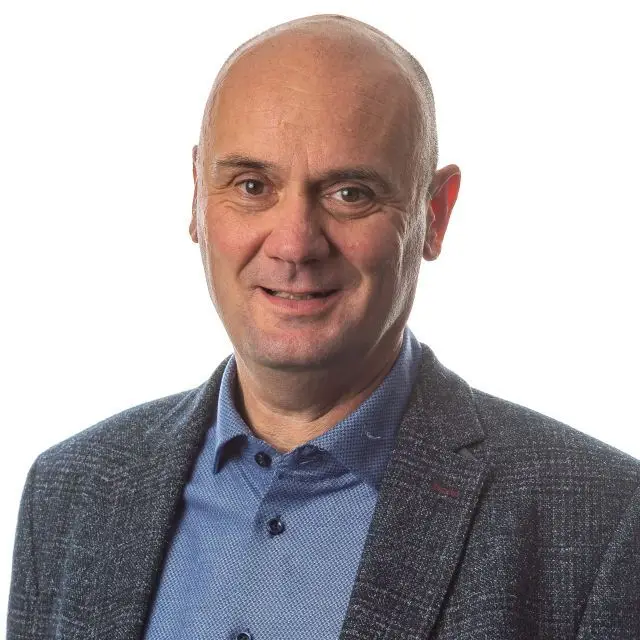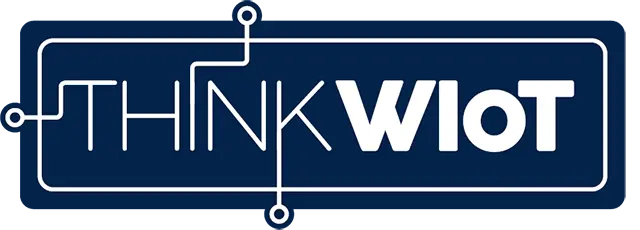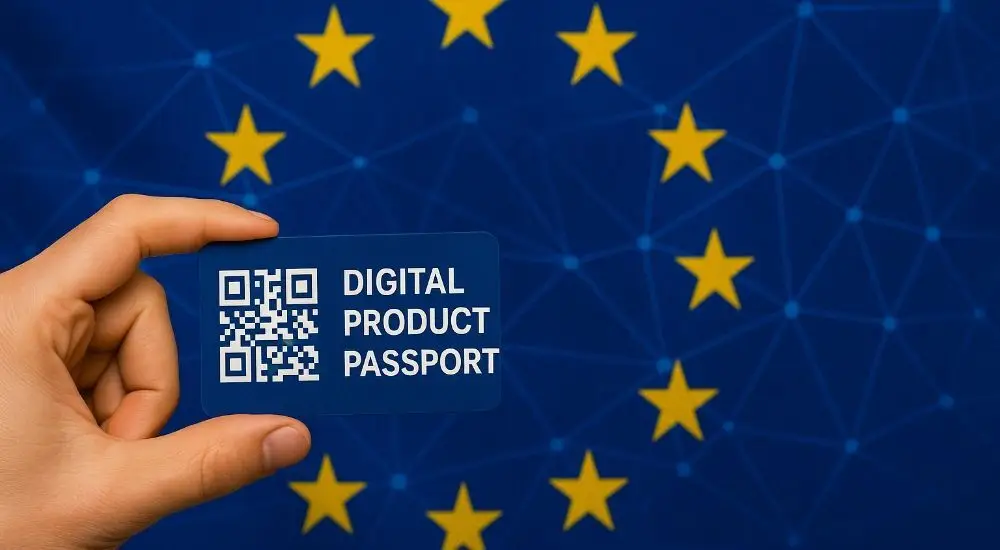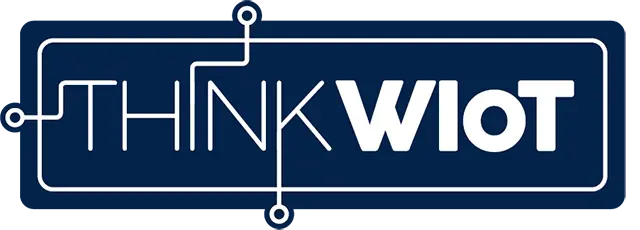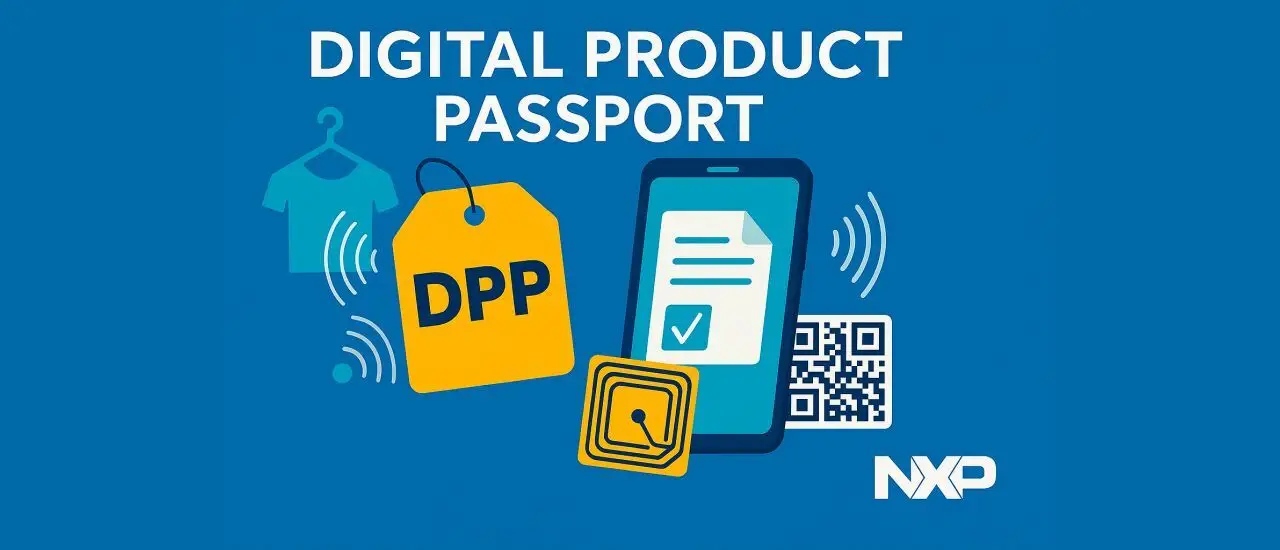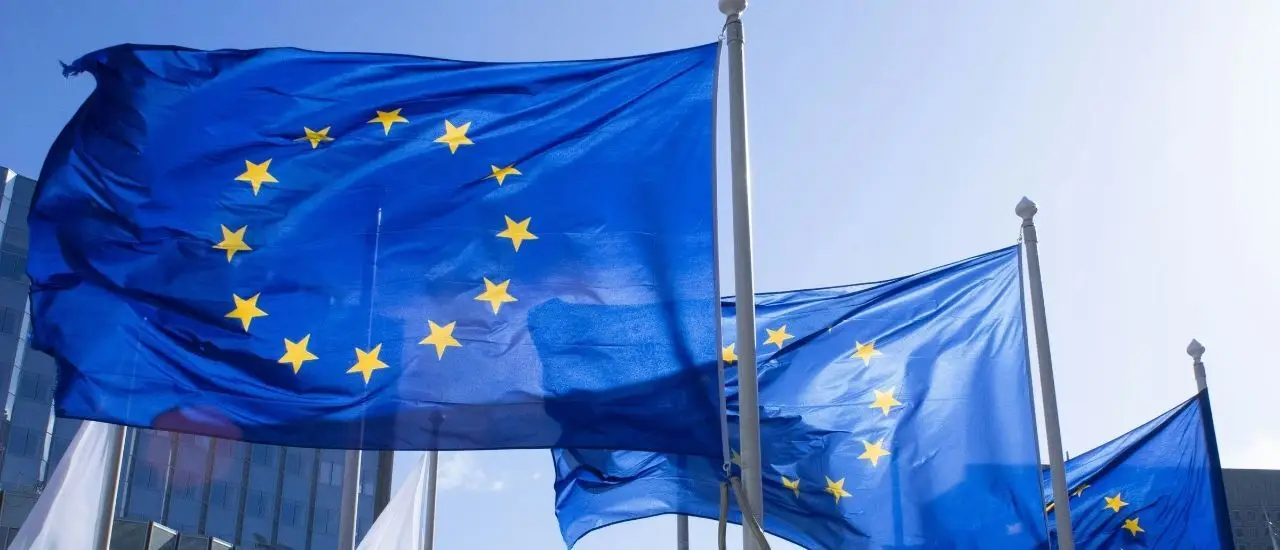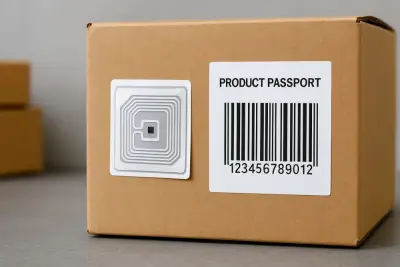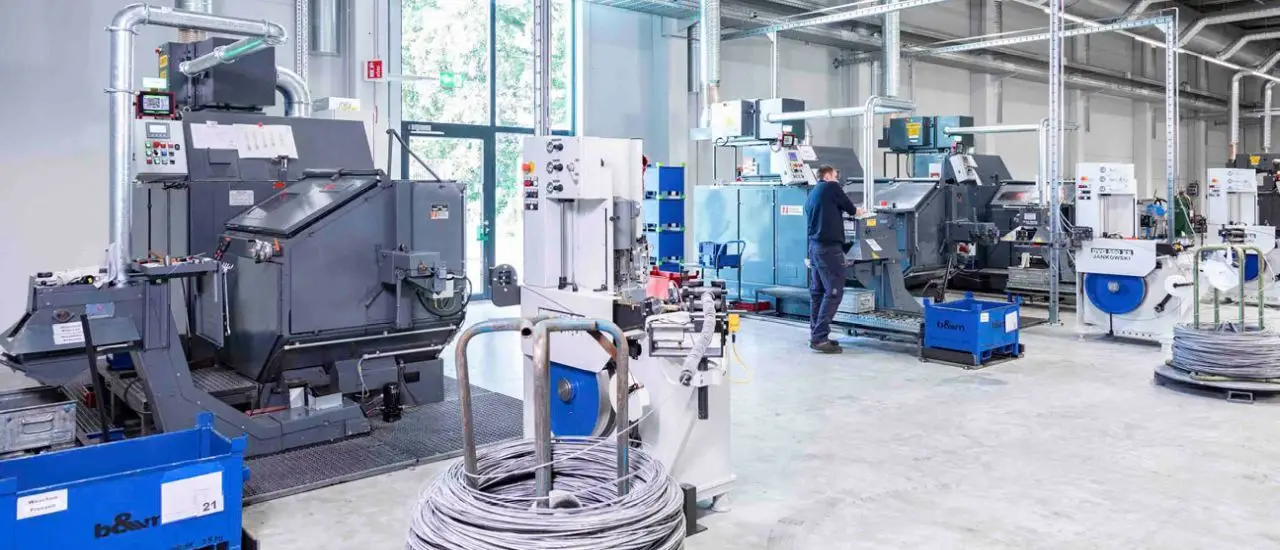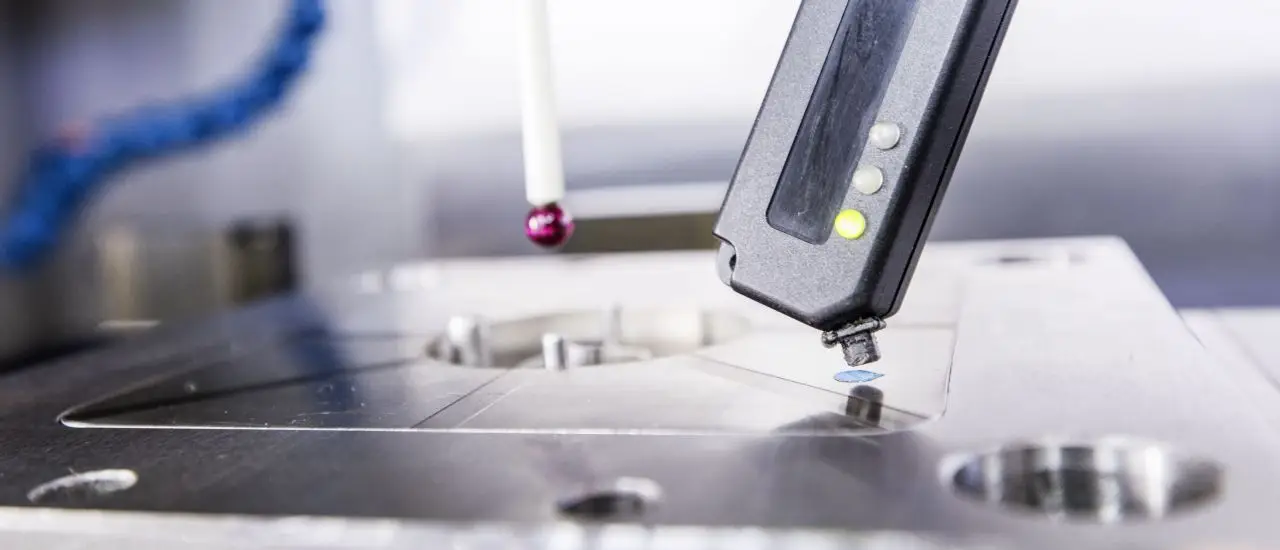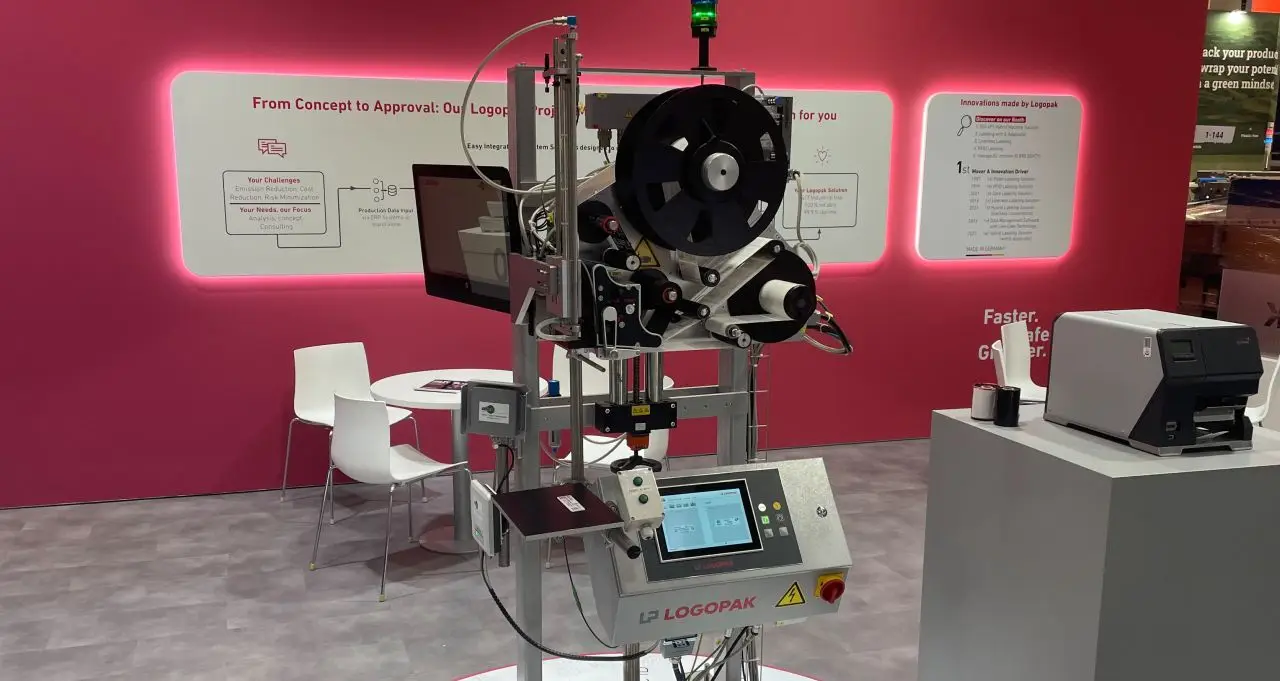The Digital Product Passport (DPP) is intended as a central tool of the European Green Deal to promote a circular economy, resource independence, and sustainability. The technical foundation is currently being laid in the form of eight harmonized European standards, scheduled for completion by 2026 and to become mandatory in stages starting in 2027.
In this interview, Anja Van Bocxlaer speaks with Otto Handle, convenor of the CEN/CENELEC JTC 24 WG 4 "digital product passport - interoperability framework" European working group, about the status of standardization, the challenges, and the opportunities for companies.
The Digital Product Passport (DPP) is considered a key instrument of the European Green Deal to advance circular economy, resource independence, and sustainability in Europe. Since 2024, the CEN/CENELEC Joint Technical Committee 24 (JTC 24) has been working intensively on the details: over 200 meetings have already been held to develop the eight standards commissioned by the European Commission.
These drafts—the so-called “Draft Enquiries”—have now been submitted to the national standardization institutes and are available to the public for the first time. The new Ecodesign Regulation, in force since June 2024, requires the introduction of Digital Product Passports for many product groups. The first to be affected are battery storage systems over 2 kWh capacity, which will require a DPP starting in 2027. Additional product groups will follow from 2028 based on the European Commission’s prioritization. Up to six million companies in Europe could ultimately be required to provide digital product passports.
Master builder Otto Handle has been volunteering for 18 months on the development of the Digital Product Passport—out of conviction. With his company inndata, he has been standardizing digital data exchange in the building materials industry for over 25 years, together with industry associations such as VBÖ, F.B.I., and ZIB, primarily active in Austria.
For the Austrian Federal Guild of the Construction Industry, he is active in various standardization committees and, since early 2024, has chaired the European working group CEN/CLC/JTC24 WG 4 “Digital Product Passport – Interoperability” as Convenor. In this interview, he discusses the current state of standardization, his motivation, and the challenges for companies.
Interview with Otto Handle, Chair of the Standards Committee CEN/CLC/JTC24 WG4
The EU Commission’s Green Deal has strongly shaped this topic. How do you see its influence on the DPP project?
Otto Handle: The Green Deal, announced by Commission President Ursula von der Leyen in 2019, was certainly a decisive impetus. The obligation to publish Digital Product Passports stems from the Ecodesign Regulation, which is a key part of the first legislative package for the Green Deal. The Commission’s standardization mandate to JTC 24 is being worked on intensively; since April 2024, over 200 meetings have been held to draft the DPP standards. This shows how seriously European standardization bodies—and of course the EU itself—take the topic.
The DPP is an essential tool for implementing Europe’s sustainability efforts toward a circular economy, resource independence, and sustainability. That’s why hundreds of experts are working so intensively on it.
Bmstr. Ing. Otto Handle, mba - Convenor CEN/CENELEC JTC 24 WG 4 "digital product passport - interoperability framework"
Digital Product Passport: Where do we currently stand?
Right now the commenting phase is underway. What comes next?
Otto Handle: Until 18 September 2025 (that’s the deadline for most drafts), the national mirror committees at the standards institutes can submit comments on the current drafts. Comments from third parties are also welcome—for example, they can be submitted via the DIN portal in Germany. These comments will then be reviewed and evaluated in the working groups. The drafts themselves can’t be fundamentally changed anymore, but every one of what will likely be several hundred comments will be discussed and, if appropriate, taken into account.
Companies, integrators, and software providers are now called to act:
👉 Register for free with DIN (no German address required) to review the drafts yourself. The documents are available at www.din.de.Bmstr. Ing. Otto Handle, mba - Convenor CEN/CENELEC JTC 24 WG 4 "digital product passport - interoperability framework"
What steps remain in the working groups?
Otto Handle: The feedback will be reviewed, assessed, and integrated into the existing drafts of the eight harmonized European standards. The consensus principle applies—so as long as someone has substantiated objections, work will continue until consensus is reached.
The actual content definitions are not part of this process, by the way. Those will be established in delegated acts by the European Commission in consultation with stakeholders in the so-called “Ecodesign Forum” for each product group individually. That naturally takes time and will follow a set prioritization.
When will the new standards be published?
Otto Handle: The publication of the eight standards is planned for 31 March 2026. The first content requirements via delegated acts are expected in 2028. The large battery storage systems mentioned are already required to have a DPP starting in spring 2027 due to the Battery Regulation.
How permanent are these standards? Will there be revisions?
Otto Handle: Standards are generally reviewed every five years to see if revisions are needed. A revision can also be initiated more quickly if there’s a need. That could very well happen with the DPP.
Digital Product Passport: These Requirements Are Mandatory
What requirements need to be considered for technical implementation?
Otto Handle: As required by the EU, the DPP was designed to be technology-neutral and vendor-neutral. It’s important that it’s both consumer-friendly and usable for software systems as machine-readable, structured data. There mustn’t be any technical barriers that make access more difficult.
What are the rules for labeling?
Otto Handle: Basically, all labeling methods are allowed as long as they meet the requirements for the Unique Identifier and Data Carrier defined in the two new standards intended for this purpose. It could be a QR code, but NFC or UHF RFID are also possible. The key requirement is that consumers must be able to access the DPP information easily with an ordinary smartphone—without being forced to download an app, share personal data, or allow tracking or profiling.
Which product groups will require a DPP in the future?
Otto Handle: Basically almost all products—with a few exceptions such as food and animal feed, medicines, weapons, or certain vehicles. Even very small components like screws will need a DPP once there’s a delegated act for them. The labeling can be on the product itself, in the packaging, or in accompanying documents. For retail, especially distance selling like online shops, manufacturers will also need to provide a usable link to the information. Access must in all cases be barrier-free.
Are there special rules for batteries?
Otto Handle: Yes, batteries are a special case because they fall under the specific rules of the Battery Regulation and will already need a DPP by 2027.
The DPP from a Manufacturer’s Perspective
How much effort will implementation involve for companies?
Otto Handle: The draft standards were designed according to the European Commission’s mandate to avoid creating unsolvable challenges. Any software system that follows these relatively low-threshold standards will be able to participate in the DPP system.
The more pressing task is to critically review one’s own products: are they truly circular, recyclable, and therefore sustainable? Measures in areas like product design, documentation, and certification may be necessary. These should be started promptly, as they can and should begin even independently of the DPP specification itself.
The Digital Product Passport is both an opportunity and an obligation. Companies that make their products future-proof can also use that as a real USP in sales. The EU Commission has introduced provisions that are fundamentally sensible and have been developed to a high standard. The DPP system also offers smaller companies the chance to compete successfully in a fair market with innovative products.
Bmstr. Ing. Otto Handle, mba - Convenor CEN/CENELEC JTC 24 WG 4 "digital product passport - interoperability framework"
How do you personally assess the results of the work so far?
Otto Handle: So far, the preparation of the DPP has been successful and on schedule. We’re very pleased about that. There has been intensive and solid work at both the legislative and standardization levels. That’s a solid foundation for the success we’re all hoping for. The future will show whether we can really achieve the European Green Deal goals of circular economy, resource independence, and sustainability with it.

